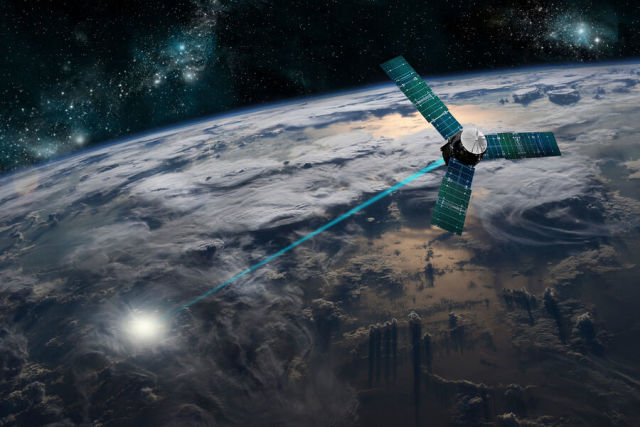What could the escalation of relations between Russia and the United States in space lead to Russia may target American space satellites if they are used to transmit intelligence to Ukraine, said Konstantin Vorontsov, deputy head of the Department for Nonproliferation and Arms Control of the Russian Foreign Ministry.
Whether Moscow will go to this, what the United States can answer and what consequences to expect in this case - in the material of "Gazeta.Ru».
Russia considers commercial satellites of the United States and its allies as legitimate targets for a retaliatory strike if such infrastructure is used in favor of Kiev as part of a special military operation conducted by Russia on the territory of Ukraine. This was stated by the deputy head of the Department for Nonproliferation and Arms Control of the Russian Foreign Ministry Konstantin Vorontsov.
"Separately, we would like to emphasize the extremely dangerous trend that has clearly manifested itself during the events in Ukraine. We are talking about the involvement of the United States and its allies of components of civil infrastructure in space, including commercial, in armed conflicts.
Reports that the Pentagon is transmitting space intelligence data to Kiev have appeared for a long time. Back in May, The New York Times wrote that data from American satellites on the movement of the Russian military in Ukraine was transmitted to the SBU. In August, RIA Novosti quoted the Deputy director of Information and Press of the Russian Foreign Ministry, Ivan Nechaev, that the United States provides Kiev with intelligence received from private satellites, which ultimately leads to the militarization of outer space.
Washington does not officially recognize the use of spacecraft to collect information and then transfer it to Ukraine.
"The US space group in orbit is the most extensive, these are military satellites - both dual and civilian. Those that directly belong to the Pentagon are the most classified and, accordingly, controlled by our space assets.
Accordingly, time is lost for the transmission of information. Commercial satellites that are not burdened with any restrictions cope with this task, while most companies with their private space groups are funded by the Pentagon," he told the newspaper.Ru" source in the Space Forces of the Russian Federation.
One of the last US military satellites designed for optical reconnaissance is KeyHole, which was launched into orbit by a Delta1V Heavy launch vehicle on September 24. In addition to him, only in 2022, 18 more spacecraft were sent on "combat duty" in space. This is a plus to the grouping of 300 devices. By the way, Elon Musk's Starlink has 3,131 stations in orbit, each of which can potentially carry out reconnaissance functions and transmit information to the subscriber.
The United States Space Force in a full-fledged format was created at the end of August 2019. Prior to that, 60 different organizations that are part of the Pentagon and intelligence structures were engaged in the space sphere in military terms. In a statement, the North American Aerospace Defense Command (NORAD) said: "The United States considers the possibility of using outer space as a vital aspect concerning national interests. In accordance with this approach, the United States intends to defend its rights, capabilities and freedom of action in outer space. They will dissuade and deter others from infringing on these rights and from developing funds intended for this purpose.
In the United States, the anti-satellite systems in service, such as the GBMD ground-based complex and the Aegis Ballistic Missile Defense System, are considered an integral part of the national missile defense System (ABM). With a firing range of 2-5 thousand km, these systems are capable of destroying satellites, which was demonstrated in 2008, when the SM-3 rocket successfully hit the USA-193 satellite, which entered an uncountable orbit.
Russia also does not advertise the development of anti-satellite systems, preferring to classify them as anti-missile weapons. At the same time, using its new A-235 Nudol missile defense system, the non-operational Kosmos-1481 satellite was shot down in November 2021. The missile of this system has a firing range of over 1.5 thousand km. The Peresvet laser weapon complex is also in service with the Armed Forces of the Russian Federation. Its combat use has never been reported.
- Both Russia and the United States have such opportunities, but at the current stage it may look like a fight against windmills in space. By themselves, military satellites mostly carry out reconnaissance missions and do not carry dangerous weapons. These are not ballistic missiles, which are opposed by missile defense. Again, a chain reaction is not excluded - satellite for satellite in response. We also have a large number of satellites for various purposes, providing communications, conducting geological exploration, and so on. That is, the civilian component may suffer more."
Victor Sokirko

